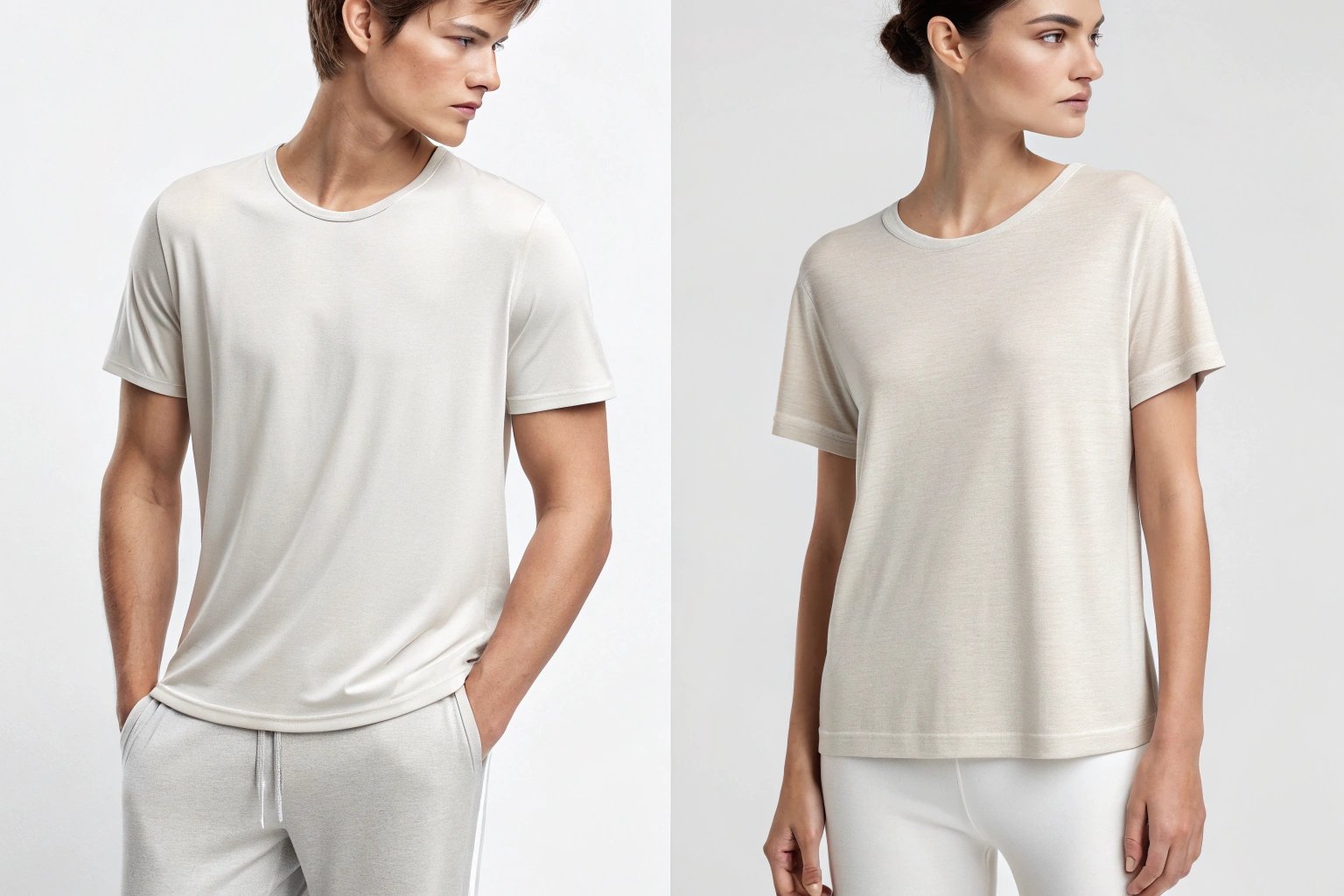Loose shirts offer comfort, airflow, and a laid-back look, while tight shirts highlight shape and provide a sleek, body-conscious appearance—each works best in different situations.

When we launched our first apparel set, I thought everyone wanted slim fits. But we started seeing more returns on tight shirts than any other item. The feedback? Too tight, not breathable, hard to move in. That’s when I realized: fit isn’t just a size—it’s a choice. Here’s what to know before you pick loose or tight.
What makes a loose shirt a better choice?
Loose shirts provide comfort, breathability, and a relaxed silhouette, ideal for casual wear, oversized looks, and warmer climates.
Loose shirts are often seen in streetwear, resort styles, or minimalist fashion. We’ve produced oversized cotton poplins, linen button-downs, and drop-shoulder tees. These styles let the fabric fall freely, which helps create ease and movement.
They’re popular with customers who want to feel comfortable all day, especially during summer or in humid regions. They also work well with tight bottoms—leggings, skinny jeans, or biker shorts—to balance out the volume.
Why do people still choose tight shirts?
Tight shirts define the body, offering a fitted, sleek appearance that works best in activewear, layering, or fashion-forward silhouettes.
Fitted shirts work when structure matters. Think under blazers, tucked into skirts, or worn for workouts. Our best-selling workout tops use poly-spandex blends that hug without restricting.
Tight shirts also show body definition. That’s why they’re popular among gym-goers, dancers, or anyone who wants a more tailored, intentional look.
How do loose and tight shirts compare side by side?
Loose shirts are better for breathability and comfort, while tight shirts offer structure and body definition—each has strengths depending on setting and styling.
Here’s a clear comparison:
| Feature | Loose Shirt | Tight Shirt |
|---|---|---|
| Comfort | High—roomy and breathable | Lower—snug and body-fitted |
| Style Vibe | Casual, relaxed, streetwear | Sleek, fitted, active or formal |
| Movement | Excellent | Can restrict in some areas |
| Versatility | Best with slim bottoms | Best under jackets/layers |
| Fabric Need | Flowy, light | Stretch, recovery fabrics |
When we build collections, we always include both. A cropped boxy tee for Gen Z buyers, and a fitted modal rib top for those who want a clean silhouette.
Which style is more popular now?
Loose shirts have gained popularity in streetwear and casual fashion, but tight shirts remain key in fitness, layering, and polished styling.
We’ve seen oversized looks dominate TikTok and Instagram—boxy crop tees, oversized button-downs, and wide sleeve cuts. But in activewear, fitted tops still lead. Customers want their yoga shirts to stay in place, not drape.
Culturally, fit preferences also differ. U.S. and U.K. markets lean toward loose comfort, while European buyers often request fitted basics. Knowing your customer base is key.
How do body types affect the choice?
Loose shirts skim the body and are forgiving on more body types, while tight shirts highlight shape and require more attention to fabric and cut.
We recommend loose shirts for apple or pear body types—they soften curves and don’t cling. For athletic builds or hourglass figures, tight shirts can enhance shape when done right.
Always consider hem length, sleeve cut, and stretch level when designing. A tight shirt with bad fabric is the fastest way to earn bad reviews.
Conclusion
Loose or tight—it’s not about better or worse. It’s about knowing when each fit serves the look, the comfort, and the message you want to send.

